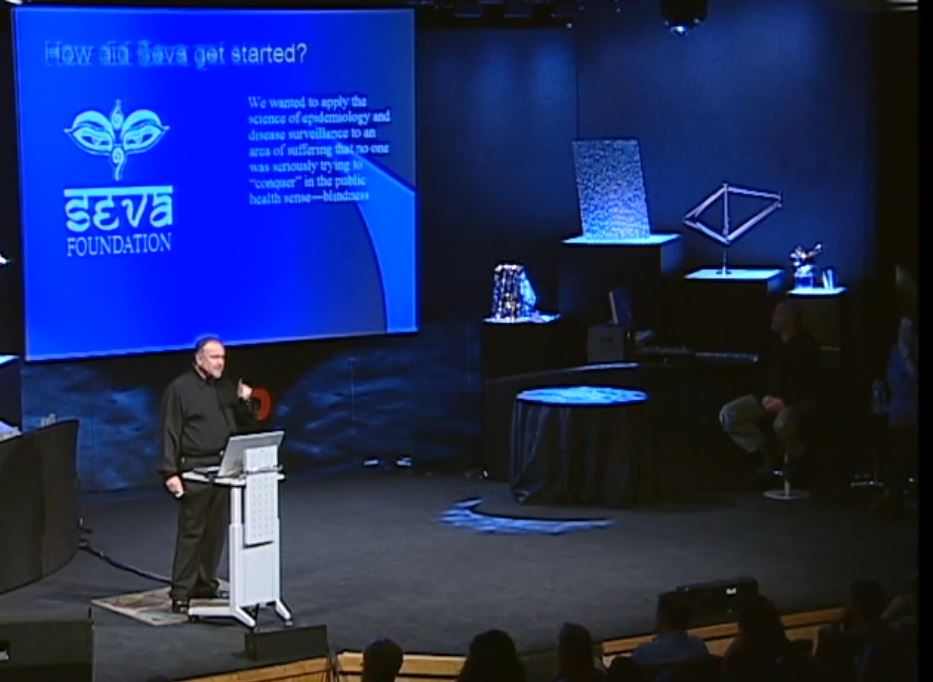During the 20th century, it is estimated that smallpox was responsible for 300–500 million deaths. In the early 1950s, an estimated 50 million cases of smallpox occurred in the world each year. As recently as 1967, the World Health Organization estimated that 15 million people contracted the disease and that two million died in that year. After successful vaccination campaigns throughout the 19th and 20th centuries, the WHO certified the global eradication of smallpox in December 1979. (Wikipedia)
FORECASTING END TO AIR TRAVEL DURING A FUTURE PANDEMIC, BACK IN 2006
Global Public Health Intelligence Network
WIRED INTERVIEW WITH LARRY BRILLIANT
LARRY BRILLIANT SAYS he doesn’t have a crystal ball. But 14 years ago, Brilliant, the epidemiologist who helped eradicate smallpox, spoke to a TED audience and described what the next pandemic would look like. At the time, it sounded almost too horrible to take seriously.
“A billion people would get sick,” he said. “As many as 165 million people would die. There would be a global recession and depression, and the cost to our economy of $1 to $3 trillion would be far worse for everyone than merely 100 million people dying, because so many more people would lose their jobs and their health care benefits, that the consequences are almost unthinkable.”
“If we’re only seeing right now one-seventh of the actual disease because we’re not testing enough, and we’re just blind to it, then we’re in a world of hurt.”
Now the unthinkable is here, and Brilliant, the Chairman of the board of Ending Pandemics, is sharing expertise with those on the front lines. We are a long way from 100 million deaths due to the novel coronavirus, but it has turned our world upside down. Brilliant is trying not to say “I told you so” too often.
But he did tell us so, not only in talks and writings, but as the senior technical advisor for the pandemic horror film Contagion, now a top streaming selection for the homebound. Besides working with the World Health Organization in the effort to end smallpox, Brilliant, who is now 75, has fought flu, polio, and blindness; once led Google’s nonprofit wing, Google.org; co-founded the conferencing system the Well; and has traveled with the Grateful Dead.
We talked by phone on Tuesday. At the time, President Donald Trump’s response to the crisis had started to change from “no worries at all” to finally taking more significant steps to stem the pandemic. Brilliant lives in one of the six Bay Area counties where residents were ordered to shelter in place. When we began the conversation, he’d just gotten off the phone with someone he described as high government official, who asked Brilliant “How the fuck did we get here?” I wanted to hear how we’ll get out of here. The conversation has been edited and condensed.
Steven Levy: I was in the room in 2006 when you gave that TED talk. Your wish was “Help Me Stop Pandemics.” You didn’t get your wish, did you?
Larry Brilliant: No, I didn’t get that wish at all, although the systems that I asked for have certainly been created and are being used. It’s very funny because we did a movie, Contagion—

Globally, the World Health Organization (WHO) estimates that the flu kills 290,000 to 650,000 people per year.
Former Eastman Kodak Scientist and Engineers Develop Liquid Germ Killer Hy-IQ® to Revolutionize the way Deadly Bacteria and Virus are Eradicated

The Aphex BioCleanse solution (a liquid) is a marvel of engineering technology that doesn’t ‘burn’ through bacterias cellular walls, like all current chemical disinfectants.
Instead, it takes advantage of nature’s desire for equilibrium – by creating an imbalance in the cell wall of a dangerous organism, after which the organism kills itself – trying to get the cell wall back into balance. Yes, sounds a little confusing at first. But our report will break this down.

FOR THE SCIENTIFICALLY ORIENTED
One of the most brilliant infectious disease experts Mike Osterholm. An hour and twenty-four minutes, but else do you have to do?
Pay special attention to the part on bacteria that is resistant to antibiotics – which he describes as a coming slow-moving Tsunami at the 38-minute and 40-second mark, frightening.












